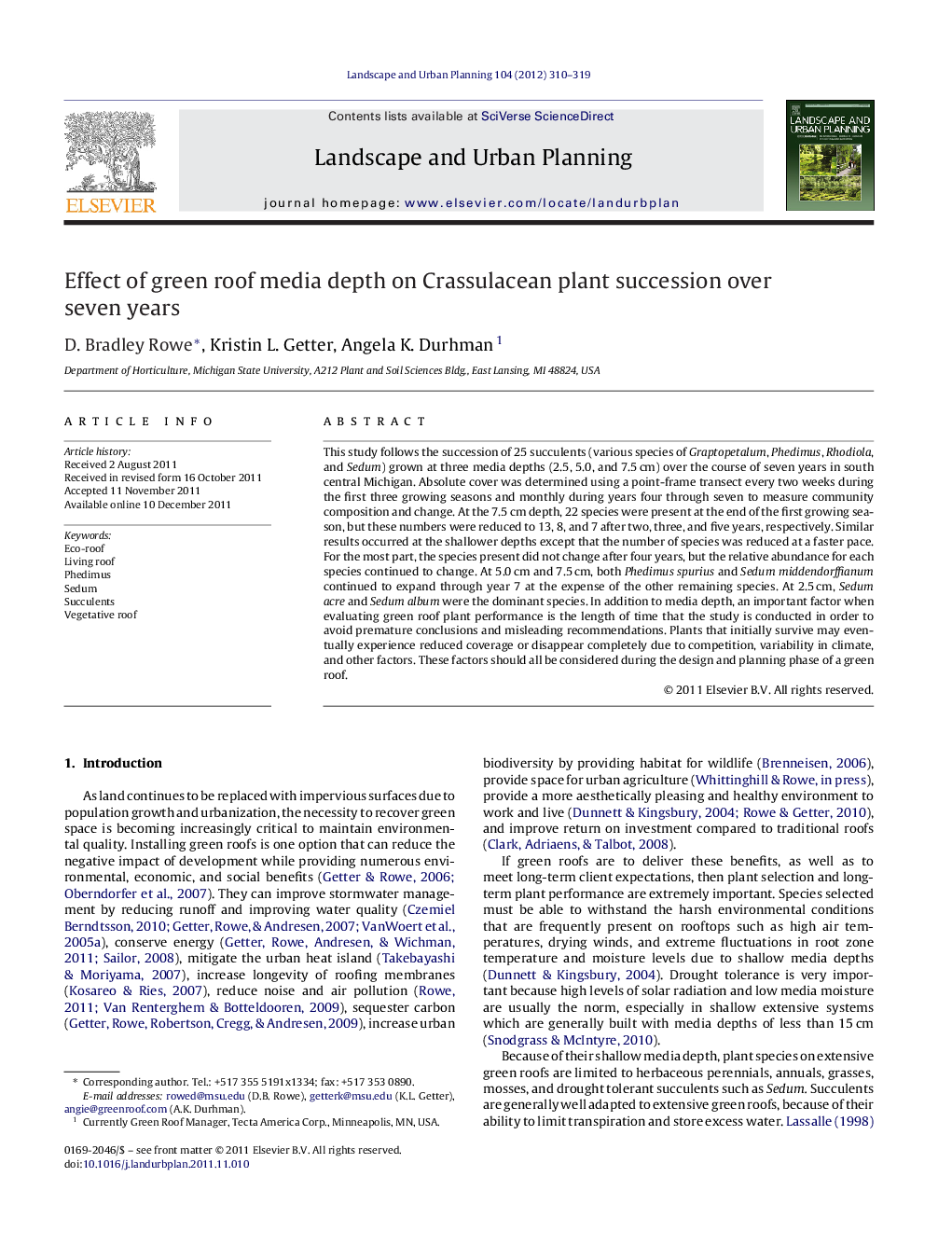| Article ID | Journal | Published Year | Pages | File Type |
|---|---|---|---|---|
| 1049657 | Landscape and Urban Planning | 2012 | 10 Pages |
This study follows the succession of 25 succulents (various species of Graptopetalum, Phedimus, Rhodiola, and Sedum) grown at three media depths (2.5, 5.0, and 7.5 cm) over the course of seven years in south central Michigan. Absolute cover was determined using a point-frame transect every two weeks during the first three growing seasons and monthly during years four through seven to measure community composition and change. At the 7.5 cm depth, 22 species were present at the end of the first growing season, but these numbers were reduced to 13, 8, and 7 after two, three, and five years, respectively. Similar results occurred at the shallower depths except that the number of species was reduced at a faster pace. For the most part, the species present did not change after four years, but the relative abundance for each species continued to change. At 5.0 cm and 7.5 cm, both Phedimus spurius and Sedum middendorffianum continued to expand through year 7 at the expense of the other remaining species. At 2.5 cm, Sedum acre and Sedum album were the dominant species. In addition to media depth, an important factor when evaluating green roof plant performance is the length of time that the study is conducted in order to avoid premature conclusions and misleading recommendations. Plants that initially survive may eventually experience reduced coverage or disappear completely due to competition, variability in climate, and other factors. These factors should all be considered during the design and planning phase of a green roof.
► Deeper media depths promoted growth, but stable plant communities were found at 2.5 cm. ► At 2.5 cm, Sedum acre and Sedum album were the dominant species. ► At 5.0 cm and 7.5 cm, Phedimus spurius and Sedum middendorffianum were dominant. ► Matching depth and species are important to ensure green roof success. ► Long-term plant studies are important to avoid making misleading recommendations.
